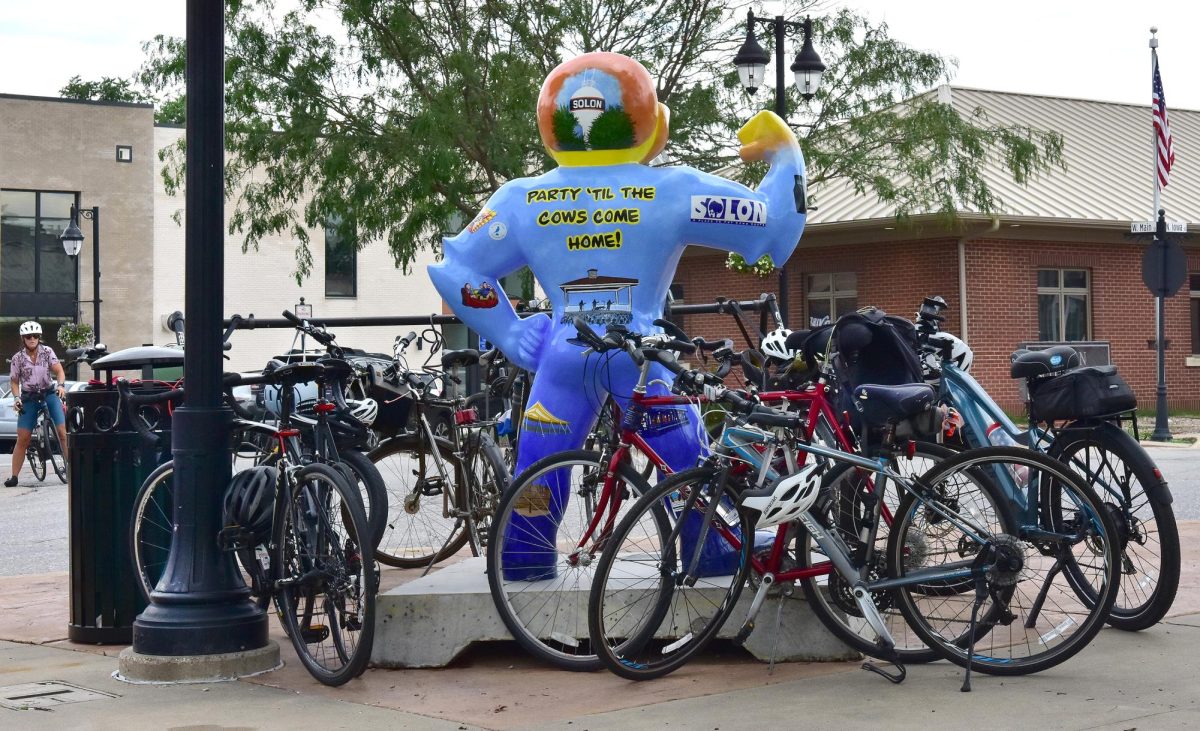Iowa is home to more than 2,000 miles of trails and nearly 900,000 bicycle riders. Cycling and trails provide more than a fun, outdoor recreation experience, they are powerful economic and health initiatives for the state of Iowa.
The Iowa Bicycle Coalition – a nonprofit organization dedicated to promoting bicycling and advancing bike safety, education, accessibility, and building a community of supporters – recently conducted a statewide Economic and Health Impacts of Cycling & Trails Study to better understand the impact across Iowa.
Discover how cycling and trails play a vital role in tackling three of Iowa’s top health issues identified in the State Health Assessment (SHA): Active Living, Economic Stability and Income and Mental Health and Mental Disorders, and the ongoing work on Healthy Eating and Active Living in the State Health Improvement Plan (SHIP).
The Economic Impacts of Cycling and Trails
The study found that bicycling and trail use bring an impressive $1.4 billion to Iowa’s economy. Spending by recreational riders on gear, local bike shops, dining, lodging and infrastructure supports over 21,000 Iowa jobs and generates $690 million in wages. These factors illustrate just how fundamental cycling and trails are to Iowa’s future by keeping dollars in our communities and promoting tourism.
Measuring symptoms is challenging due to their subjective nature. Many “symptoms may go unrecognized or unreported if people don’t think they are important or related to an existing health condition” (source). Subtle symptoms such as fatigue, sleep disturbances, weight gain and depression can be early indicators of acute events or the need for hospitalization. Additionally, symptoms can appear even when there are no changes in the progression of the disease, and the disease itself may advance without any symptoms. This underscores the importance of prioritizing comprehensive, person-centered care to effectively address health conditions.
Impacts on Physical Health
The benefits of cycling and trail use are not limited to their economic contributions. Studies have found that bicycling and trail use resulted in better health outcomes for Iowans. While it is no surprise that physical activity like cycling reduces the risk of chronic disease, the study results help to quantify the economic value of preventable chronic health conditions.
Diabetes: Active cyclists are 25% less likely to have diabetes. Cycling prevents about 2,000 cases of diabetes in the state and prevents around $25 million spent on diabetes treatment.
Breast Cancer: Active cycling decreases the likelihood of breast cancer by 28% compared to the rest of the population. This translates to 160 fewer cases and $21 million in avoided medical treatment costs.
Colorectal Cancer: Iowa cyclists are 77% less likely to have colorectal cancer, representing 100 fewer cases statewide and $16 million in avoided medical costs.
Obesity: Active cyclists experience lower rates of obesity compared to the rest of the population, preventing $25 million in medical expenses as a result. Currently, the healthcare spending, loss of life, absenteeism, and disability associated with obesity costs Iowa state residents $4.5 billion annually.
High Blood Pressure: Cyclists experience high blood pressure at lower rates. If this were not the case, there would be an increase of approximately 1,200 individuals with high blood pressure
Stroke: Active cyclists are 12% less likely to experience a stroke and avoid $35 million in related medical expenses.
Mental Health: The National Alliance on Mental Illness (NAMI) reports that 473,000 adults in Iowa have a mental health condition. Multiple studies have shown that physical activity can have a positive impact on mental health. Cycling and trail use is a great way to bring more movement into one’s life and spend time outdoors. The Economic and Health Impacts of Cycling and Trails study found that compared to their non- cycling counterparts, cyclists are 49% less likely to have experienced over 15 poor mental health days in a 30-day survey period, with 5,400 fewer Iowans experiencing poor mental health annually.
What’s Next?
Cycling and trail use bring a well- rounded array of benefits to the state of Iowa, improving the economy, workforce, attracting and keeping talent, helping rural areas grow and improving quality of life. Iowa Bicycle Coalition Executive Director, Luke Hoffman, views the impactful results of this study as an opportunity to advocate for policies that support safe cycling and increased trail project funding. Hoffman stated, “Our investments in bicycling infrastructure not only enhance economic and health outcomes but also position Iowa as a leader in outdoor recreation and bike tourism. Prioritizing safety and expanding infrastructure can further boost quality of life and economic and health benefits for the entire state.”
Additional policies that promote safe cycling and trail improvement funding will increase the number of users, further increasing the economic and health benefits revealed in the study.
While Iowa ranks #5 in the country for spending on biking, the state ranks in the bottom ten of states for cycling safety and laws according to The League of American Bicyclists’ 2024 rankings. A hands-free law that prohibits handheld cellphone use while driving has been identified as a key piece of legislation to reduce distracted driving. The Iowa Bicycle Coalition and nearly 30 partner organizations have joined together in an End Distracted Driving Coalition, campaigning for the passage of a hands-free law this year.
What Can You Do to Support
Cycling and Trails in Iowa?
• Learn more about the results of the Economic and Health Impacts of Cycling & Trails Study and share it with others (available at https:// iowabicyclecoalition.org).
• Learn more about physical activity efforts across the state via the SHIP ( and Partners in Action
• Promote cycling in your community by participating in Walk, Bike, and Roll to School Day on May 7 (https:// walkbiketoschool.org).

